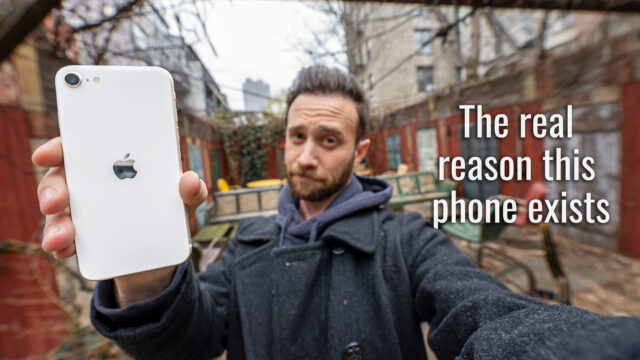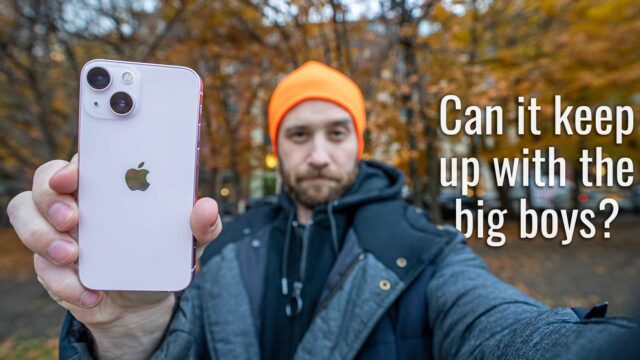Video: Apple Watch Complete Walkthrough
Apple recently started shipping their latest gotta-have-it device this month, the Apple Watch. Given the entirely new nature of the device (see: iPhone on your wrist, sorta?), people – understandably – have a lot of questions.
Whether you’re one of those who are still waiting for your Apple Watch to arrive in the mail and you’re just plain curious on what the heck this new fangled watch thingamajic actually does, here’s a quick walkthrough of the Apple Watch, its OS and hardware, and what exactly you’ll probably end up using it for in real life.
Hardware
One of the most appealing things about the Apple Watch in my opinion, is the styling. The watch itself, made out of silver aluminum for the Apple Watch Sport, stainless steel for the Apple Watch, or precious metal (gold and rose gold) for the Apple Watch Edition, is well crafted and feels like a luxury item. That’s a good thing, too, considering the price tags that start at $349 (for the Sport), average selling price around $500, and ranging as high as $17,000 (for the top model Edition).
Bands
Another thing that greatly affects the price of the watch is the band. You can choose from a ton of different options from the rubber-looking sport bands to leather to metal links and more. The bands themselves can range from $49 for the sport band in a variety of colors to $149 for a leather one to $449 for the stainless steel link band. With the ease of removing the bands by simply pushing a button on the bottom of the watch and sliding the band out though, it seems Apple is definitely going for the luxury watch demographics –the men and women who have a multiple watches to match their outfits.



Digital Crown
There are two buttons on the device, with one being a bit more than just a button. The “digital crown” as it’s called is a small wheel that you can use to select and/or scroll through things on the screen that might otherwise be a bit annoying to do with your finger on such a tiny screen. This wheel can also be pushed on to make selections as well as switching between the app screen,
Friend Button
The only other button on the device is the friend button. This button, whenever pressed, brings you to a wheel of your favorite friends. You can then use the digital crown to select one and quickly communicate with them via text, call, or – if they have an Apple Watch themselves – send them a customized animated graphic that will show up on their watch.
Watch Face
The main screen for the Apple Watch, which probably makes sense, is the watch face itself. There are a ten watch faces that come on the device (no you can’t download new ones from the App Store –least not yet). Each of these faces can also be customized in varying ways depending on the watch face you select. Things like the color of the minute hand on some, to what info displays in what sections of the watch face on others. Things like calendar, date, activity and even moon phases – for those of you out there bitten by a werewolf – it can be put on the watch face to be made front and center whenever you raise your wrist.




From this watch screen, you have two other major screens for the OS. Tapping the digital crown from the watch screen takes you to the app screen.
App Screen
The app screen is hope you select different watch apps from (watch apps are companion apps that developers can create that get installed when you install the corresponding “real” app). This screen has two views, the default zoomed in and a further zoomed out view that you can switch between by scrolling the digital crown up or down.


You can control what apps show up here by going to the Apple Watch app on your iPhone (you know, the one that was automatically put there when you updated the OS whether you bought the watch or not –constantly stabbing you to go buy one already), select the app in question, then turn on or off whether to show it on the watch.




Notifications
Next we have the notification shade, which works in the same way (for the most part) as the one on your phone. You access this by swiping down on the watch face from off the top of the screen and you’re presented with all of the notifications you’ve received. You’ll know you have a notification, by the way, when you see the small red dot at the top of the screen.
The notification shade, though, is only ever used if you miss the notification. When receiving a notification (if you aren’t already looking at your phone), you’ll get a “tap” – fancy vibration that feels a bit more directed, like someone tapping your wrist – and if you lift your wrist up within a few seconds of that tap, it will automatically display the notification right then and there and you can interact with it or dismiss it.
Glances
The last major screen in the Watch’s OS is the Glances screen. Glances are, whether anyone wants to call them it or not, widgets. By swiping up from off the bottom of the screen you bring up your glances screen. Each glance is tied to a particular watch app and brings information directly to you from that app without having to open it (did I call them widgets already?).



You can swipe left and right to get to each of the different glances and can control which ones are even displayed in the Apple Watch app on the phone by going to My Watch then tapping on the app and, if it has a glance available, tapping Show in Glances.



And that’s pretty much the gist of the OS itself. Now, how does all this come together? What’s the actual user experience like?
How You’ll Actually Use the Watch
So with all of that said, you can now navigate your way around the watch, huzzah! But, here’s how you will actually use it (besides telling the time, of course).
Notifications
One of the biggest things the Watch is good for is notifications.
It may not seem like much, but the ability to look at your wrist instead of your phone becomes a subtle, yet vital feature that even I myself didn’t quite realize how much I appreciated it until I left the watch at home accidentally one day. I continuously kept looking at my left wrist every time the phone in my pocket vibrated and got slightly annoyed at the, otherwise common place, action of having to remove it from my pocket to see what the buzz was all about (and figure out if it was important or not).
Beyond being a convenient way of checking notifications quickly, I also noticed the psychological effect it had on others around me. There’s something much less intrusive about quickly glancing at your watch while, say, sitting at a bar talking to friends, than reaching into your pocket and glancing at the actual phone instead. People just didn’t notice it as much –win?
Apps
The one thing you probably won’t use it for are the apps. With the exception of the workout app (that you’ll use to track a bike ride, run, etc. directly from the watch), messages (occasionally to see previous messages quickly), and the music controller (to change songs without taking out your phone), you’ll find yourself trying out the apps on the phone once and then just using the corresponding real app from your phone. A tiny screen and the current state of the apps available (which might change down the road) just aren’t as conducive as using the phone itself.
And there you go, a “quick” walkthrough of the all-mighty Apple Watch. Hope that helped some people curious about the device out and if it did, please share this article –it’s greatly appreciated. Also, if you have any questions, leave them in the comments below.








